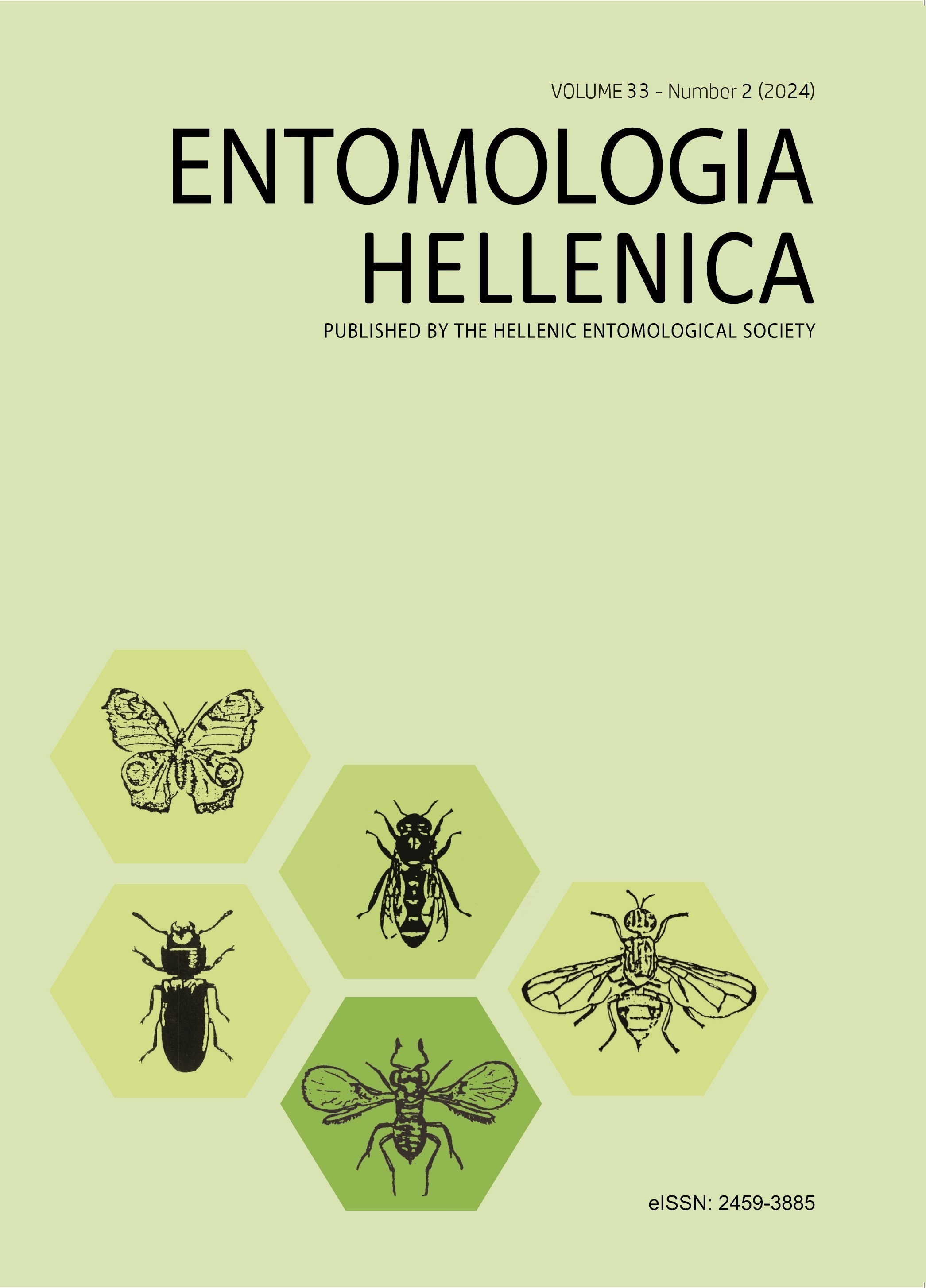Ecological Insights into Insect Diversity in Protected Area Networks of Kumaun Region, Western Himalaya

Abstract
The Uttarakhand region of the Western Himalaya, known for its rich biodiversity, includes several protected areas ranging from tropical to temperate zones. This study explores insect diversity across the six protected areas within the Kumaun Himalayan region. Altogether, a total of 412 insect species from nine taxonomic orders and 70 families were documented. Order Lepidoptera was the most diverse with a maximum of 154 species, followed by Coleoptera (81 species), Hymenoptera (58 species), Orthoptera (33 species), Hemiptera (31 species), Odonata (28 species), Diptera (23 species) and Isoptera and Neuroptera as the least dominant with two species each. Shannon’s species diversity (Hs) ranged 3.99 to 4.95, with the highest diversity in Nandhaur Wildlife Sanctuary and the lowest in Naina Devi Himalayan Bird Conservation Reserve. Cluster analysis revealed two main diversity patterns, indicating significant beta diversity amongst the study areas. Species-wise occupancy and abundance analysis revealed that Pieris brassicae, P. canidia, and Apis dorsata had the highest relative abundance from all protected areas. Conversely, 91 insect species had a relative abundance of only 0.03% each. Furthermore, seven species demonstrated the highest normalized occupancy of 1.00, indicating their adaptability to diverse environmental conditions within the protected areas. These findings thus emphasize the importance of habitat diversity and targeted conservation strategies to maintain insect populations and ecosystem health in the Kumaun Himalaya.
Article Details
- How to Cite
-
Arya, M., Bisht, S., & Tiruwa, A. (2024). Ecological Insights into Insect Diversity in Protected Area Networks of Kumaun Region, Western Himalaya. ENTOMOLOGIA HELLENICA, 33(2), 34–69. https://doi.org/10.12681/eh.38183
- Section
- Articles

This work is licensed under a Creative Commons Attribution-NonCommercial-ShareAlike 4.0 International License.
Authors who publish with this journal agree to the following terms:
Authors retain copyright and grant the journal right of first publication with the work simultaneously licensed under a Creative Commons 4.0 license.
Authors are able to enter into separate, additional contractual arrangements for the non-exclusive distribution of the journal's published version of the work (e.g. post it to an institutional repository or publish it in a book), with an acknowledgement of its initial publication in this journal. Authors are permitted and encouraged to post their work online (preferably in institutional repositories or on their website) prior to and during the submission process, as it can lead to productive exchanges, as well as earlier and greater citation of published work.


